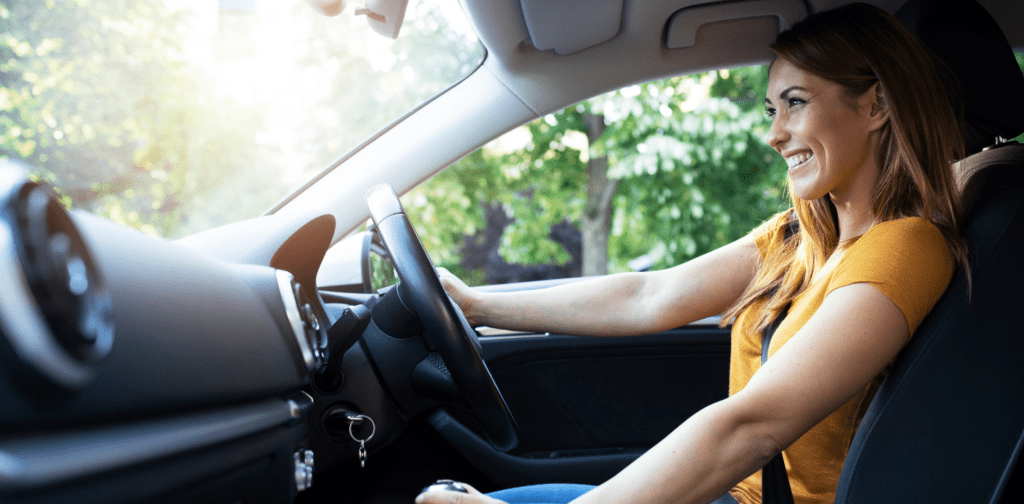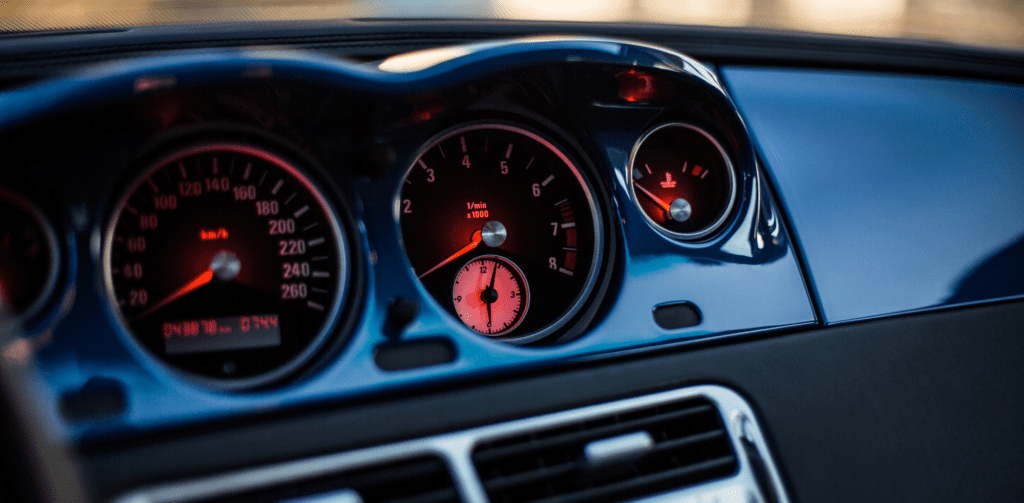
Almost every driver, whether a newbie or seasoned, has faced the abrupt halt of an engine, known as stalling.
The sudden quiet followed by the engine’s unmistakable stop can sometimes be an embarrassing moment, making us wish for a quick escape.
However, it’s important to understand that stalling is a common occurrence and not a severe mistake. Both new learners and experienced drivers can encounter it. To help ease the anxiety around stalling, we’ve compiled a guide to break down its mechanics and share tips to minimise its occurrence. Dive in!
What is stalling?
Stalling refers to when a car’s engine shuts off unexpectedly while driving. It most commonly occurs in manual transmission vehicles when the clutch is released improperly. To understand stalling better, let’s look closer at how the clutch works.
The clutch is a pedal that separates the engine from the transmission. When you press the clutch pedal down, the connection is disengaged so you can shift gears. As you slowly release the pedal, the clutch disc makes contact with the flywheel, creating friction that reconnects the engine to the drive train.

The ‘biting point‘ is that moment when the clutch plates just touch and the engine and transmission are aligned. It’s a delicate balancing act – releasing the clutch too quickly before the engine speed matches the transmission speed will cause a stall.
What causes a car to stall?
A car stalls when there’s a disruption in maintaining the necessary revolutions per minute (RPM) between the clutch plate and the engine plate. The harmonisation of these RPMs, governed by your gear choice, is crucial for the engine’s continuous operation.
If this harmony falters, a stall occurs, shutting down the engine. Moreover, if the clutch is released abruptly, the plates collide sharply, leading to a stall.
Good to know – automatic transmissions
Contrary to popular belief, automatic cars aren’t immune to stalling. Though less common, they can and do stall. Unlike manual vehicles, automatics utilise a torque converter to regulate transition fluid, maintaining the engine’s operation and choosing the appropriate gears, eliminating the need for a clutch pedal.
However, when the torque converter malfunctions, the engine of an automatic vehicle can stall. This situation typically stems from a mechanical glitch rather than human error, distinguishing it from the stalls in manual cars which often arise from driver inexperience or misjudgement.
Common stalling scenarios
Stopping and Starting
One of the classic scenarios associated with stalling unfolds at traffic lights, especially during rush hour. Picture this: you’re at a red light, a stream of cars queued behind, each driver eager to reach home after a tiring day.
The anticipation is palpable. The green light flicks on, and amidst the mounting pressure, you attempt to swiftly move the car.
Suddenly, silence. The engine stops. In your haste, you’ve probably released the clutch too rapidly. This quick action leads to the plates colliding with a force that prevents them from synchronizing effectively.
Furthermore, novice drivers sometimes overlook the clutch when halting or initiating movement, a surefire way to induce stalling.
Hill Starts
Commencing a journey on a hill is often a nerve-wracking experience, especially for new drivers. The balance of clutch engagement and power needs to be on point here.

As you’re combating gravity, the engine necessitates more thrust, translating to higher revs. If this isn’t achieved, you’re met with the familiar silence of a stalling engine.
Moreover, hills can be tricky terrains. Though it’s advisable to manipulate the clutch gently to evade stalling, too gentle a touch, coupled with insufficient acceleration, can cause your car to roll backwards. The knack lies in striking a balance between rapidity and restraint.
Driving at Slow Speeds
Stalling isn’t exclusive to stops and starts; it can catch you off-guard during slow drives too. Stalling episodes often arise from being in a mismatched gear. For instance, operating in a high gear at low speeds can suffocate the engine.

When driving at a snail’s pace, like during intricate manoeuvres, it’s pivotal to engage the first gear. In circumstances where the vehicle is barely advancing, you might need to maintain a slight pressure on the clutch to prevent a stall.
Precision is key during gear changes; a simple misstep like slipping into neutral during slow drives can unexpectedly halt the engine.
What should you do if the car stalls?
Stay Calm
First and foremost, keep your composure. While the instinctive embarrassment might be overwhelming, remember, every driver has experienced a stall at some point. Those honking or showing signs of impatience have likely been in your shoes.
Safety First
Immediately after the stall, engage the handbrake. This ensures the car doesn’t roll unexpectedly, especially if you’re on an incline.
Restarting the Car
Consider a stall as your car taking a short break. To get it going again:
- Shift the gear to neutral.
- Turn on the engine.
- Depress the clutch.
- Shift to first gear.
Check Your Surroundings
Before you venture back into motion, take a moment to reassess the environment:
- Check your mirrors for cars behind or around you.
- Confirm your blind spots.
- Look ahead for pedestrians or any other potential obstacles.
- Be alert to traffic signals; they might have changed during the brief period you were stationary.
Proceed with Caution
Although you might feel the urge to zoom off swiftly after a stall, prioritise safety. Move with caution and in a controlled manner.
Remember, stalling is a common hiccup in the driving experience. With time and practice, you’ll grow more adept at preventing them, and even more proficient at responding smoothly when they occasionally occur.
How can you avoid stalling?
Stalling can be an occasional hiccup even for seasoned drivers, but for those still finding their footing, it can feel daunting.
Here are steps and guidelines you can follow to reduce the odds of facing this issue:
Understand Your Clutch
Familiarity with your vehicle is essential. One of the key aspects is recognising the “biting point” of the clutch – that sweet spot where the clutch plate and the engine plate start to engage.
The more you drive and acquaint yourself with your car’s unique characteristics, the better you’ll become at sensing an imminent stall. In those crucial moments, knowing whether to increase the throttle or depress the clutch further can save the day.
Always stay observant of your surroundings while adjusting the clutch to maintain road safety.
Master the Handbrake Timing
Coordinate the handbrake’s release with the clutch’s bite point. As the clutch engages, maintain steady pressure on the accelerator, release the handbrake, and gradually elevate the clutch.
This coordination ensures a seamless transition from a stationary position.
Avoid Over-revving
Relying on high revs as a countermeasure to stalling might seem effective, but it isn’t recommended. Excessive gas not only drains fuel but also increases the risk of abruptly shooting forward.
Instead of flooring the gas pedal, gently press it until you achieve roughly 1500 RPM (revolutions per minute) before smoothly raising the clutch.
Practice, Practice, Practice
As the saying goes, practice makes perfect. Dedicate time to practice driving in a quiet area, focusing on starts and stops. By repeatedly rehearsing these motions, you’ll enhance your muscle memory, making it less likely for stalls to occur.
Stay Relaxed
Anxiety can impact your driving. If you’re too tense, you might rush your motions, leading to errors. Breathe deeply, stay calm, and remember that every driver has been where you are at some point.
Over time, as you become more attuned to your vehicle and build confidence, the chances of stalling will diminish. Remember, patience and perseverance are your allies on this journey.
Will you fail the driving test if you stall?
Every aspiring driver has that looming fear: “What if I stall during the test?” It’s one of the most common concerns, almost becoming the stuff of legends.
The digital age, with its treasure trove of information, can sometimes provide a mixed bag of answers, making it even more confusing. So, let’s demystify the situation.
Does stalling equate to failing?
Not necessarily. Stalling during your driving test doesn’t automatically put you in the fail column. Instead, the context in which the stall occurs is vital.
-
Your Response Matters: When the engine sputters and dies mid-test, the examiner is more interested in your reaction than the stall itself. They’ll evaluate:
- Your ability to remain composed under stress.
- The steps you take to safely rectify the situation—engaging the handbrake, restarting the engine correctly, checking your mirrors before moving off again, and so on.
-
Effect on Surroundings: How the stall impacts other road users is crucial. If you handle the situation efficiently without causing disruption or endangering other road users or pedestrians, the odds are in your favour. In such cases, you might just receive a minor fault.
-
Recurring Issues: Everyone can have an off moment, but if you stall repeatedly or at critical moments—like at a busy intersection—it might raise red flags. Here, the difference between a minor and a major fault might be determined by frequency, the situations where the stall happens, and your overall handling of the vehicle.
-
Ensuring Safety: Always prioritise safety. If you stall and then hurriedly try to start the car and move off without ensuring it’s safe to do so, it can be seen as a serious fault. Properly assessing the environment and ensuring you’re not creating a hazard when moving off is paramount.
Learn more about minors, majors and serious faults on your driving test.
A single stall doesn’t mean you’re going to fail your driving test. However, consistency, safety, and how you manage the situation play a significant role in the examiner’s judgment. Remember, the test is about assessing your ability to drive safely and competently, not flawlessly.
Stalling: The verdict
Remember, stalling is a hiccup, not a catastrophe. If it happens to you, take a deep breath, follow the recommended procedures, and get back on track.
Empathy on the road goes a long way. If you witness someone else stalling, consider the times you’ve been in their shoes.
Instead of honking or expressing frustration, offer a moment of patience. Those extra seconds of understanding can foster a positive driving environment for everyone.
Frequently asked questions
Stalling a car occurs when the engine unexpectedly stops running, usually due to the driver releasing the clutch too quickly or not providing enough throttle.
This is a common experience for learner drivers.
A car stalls because the engine doesn’t receive enough power to keep running.
This can happen when the clutch is engaged too quickly, when there’s insufficient throttle, or when starting from a stop on an incline without enough power.
To prevent stalling when starting from a stop, gradually release the clutch while simultaneously pressing the accelerator.
Practising this coordination will help you achieve a smooth start without stalling.
If you stall in traffic, stay calm. Depress the clutch fully, shift into neutral, restart the engine, and then engage the clutch and move off smoothly.
Make sure to use your hazard lights if necessary to alert other drivers.
To avoid stalling when going uphill, use the handbrake to hold the car while you find the bite point of the clutch.
Then, apply more throttle than usual before releasing the handbrake and moving off. This helps ensure the car has enough power to move forward without stalling.
Occasionally stalling your car is not harmful, especially if you are a learner driver. However, frequent stalling can put extra strain on the clutch and starter motor. Practising smooth clutch control can help minimise stalling.
The bite point is the moment when the clutch plates start to engage and the car begins to move.
Finding the bite point allows you to smoothly coordinate the clutch and accelerator, preventing the car from stalling.
Diesel cars generally have a higher torque at lower RPMs, making them less likely to stall than petrol cars.
If you find yourself stalling often in a diesel car, it might be due to not adjusting to the different throttle and clutch response compared to petrol cars.
While stalling is often due to driver error, it can sometimes indicate a mechanical problem such as issues with the fuel system, ignition system, or a faulty idle control valve.
If you stall frequently despite using correct driving techniques, it may be worth having your car checked by a mechanic.
Building confidence comes with practice. Spend time in a quiet area practising smooth clutch control, starting from stops, and finding the bite point.
Taking lessons with a qualified driving instructor can also provide valuable feedback and help you develop your driving skills, reducing the likelihood of stalling.


